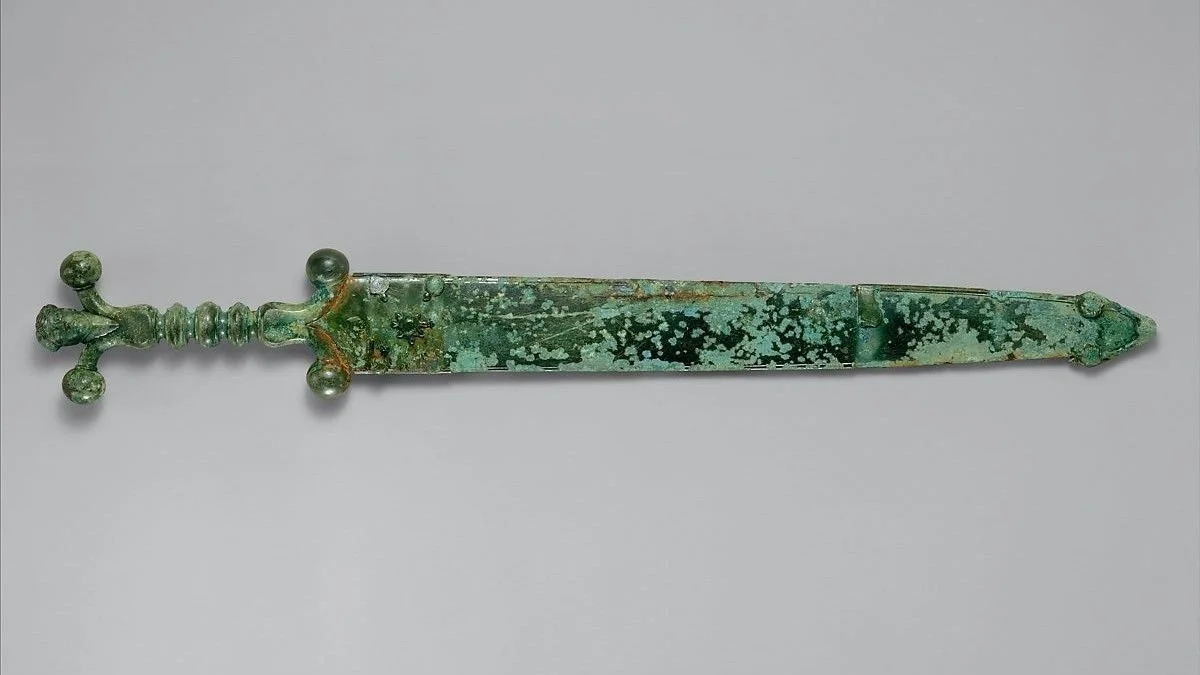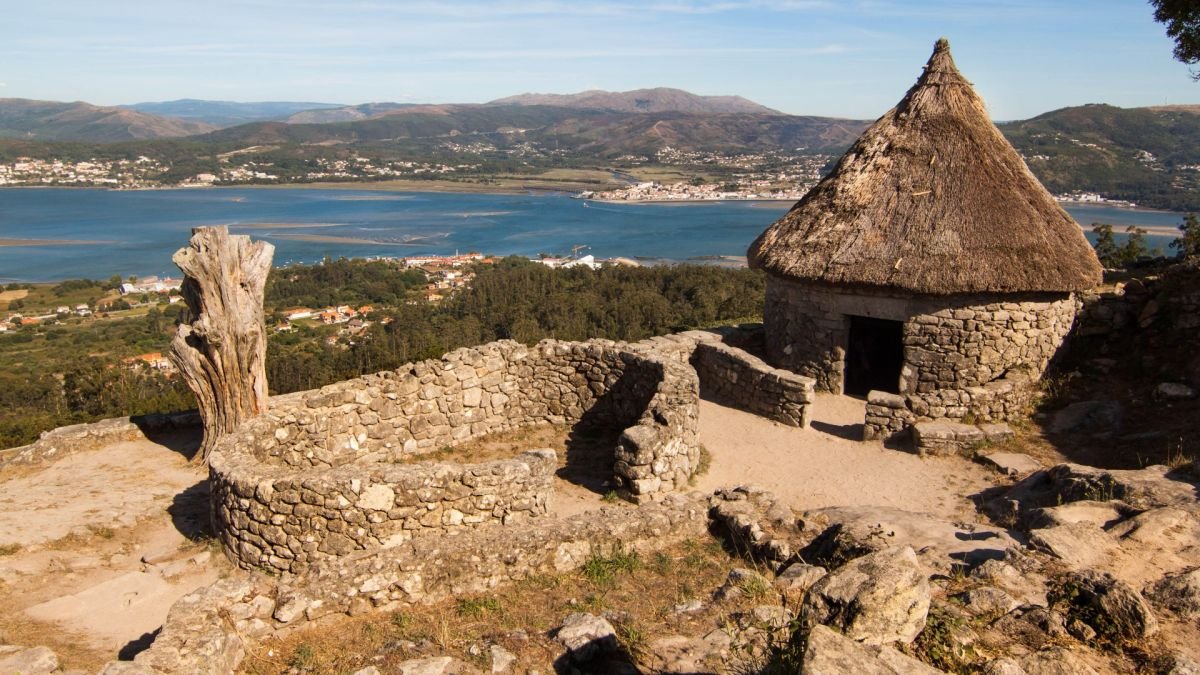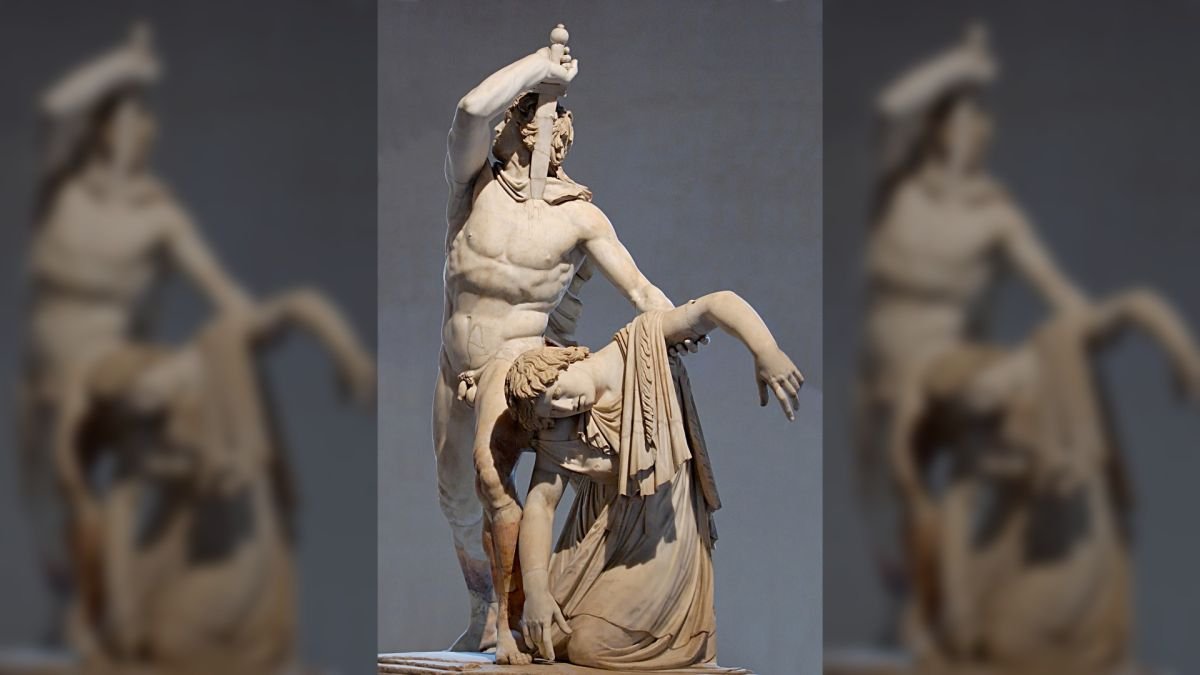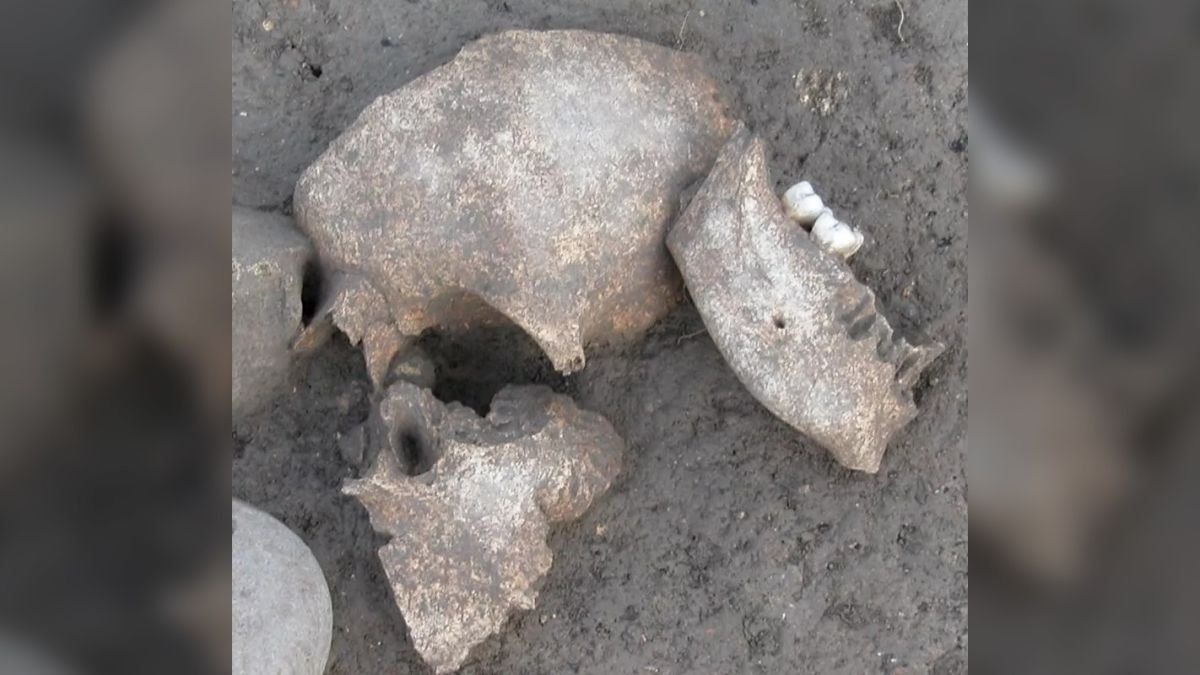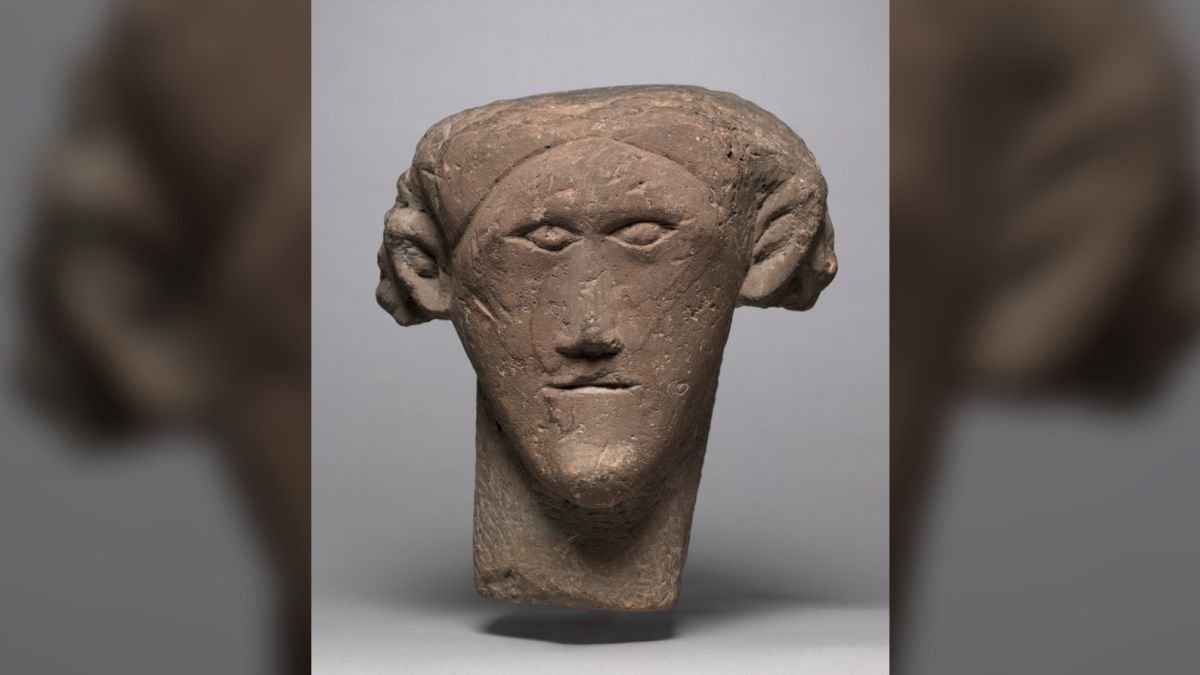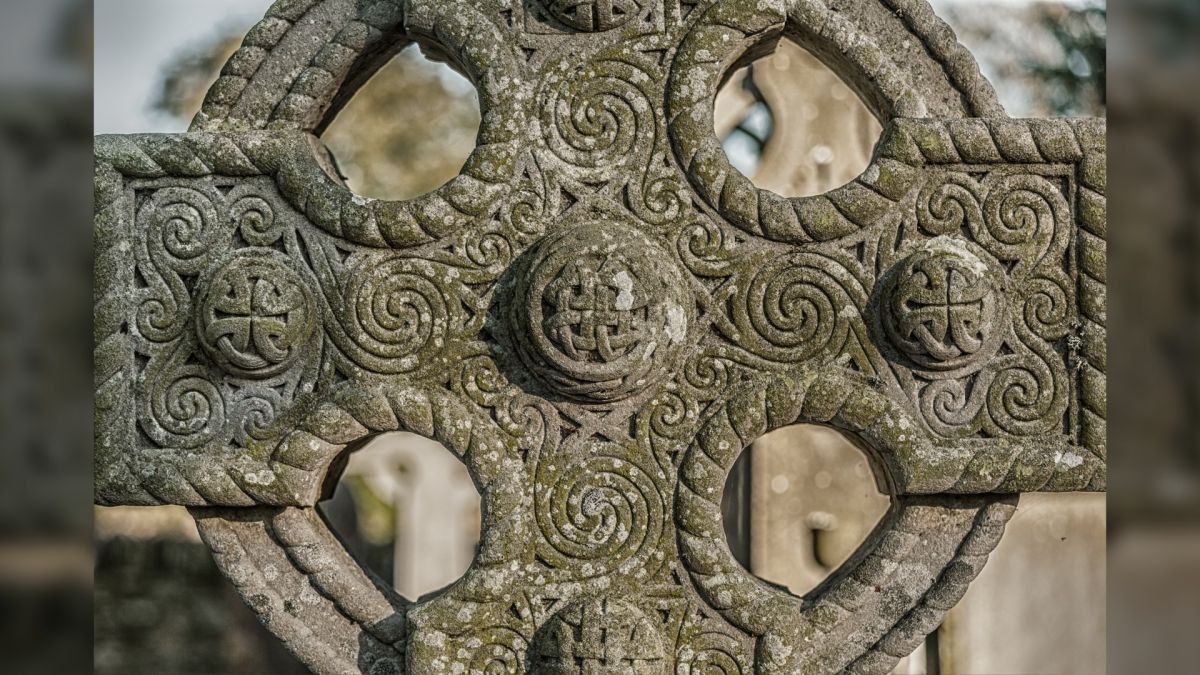In the video below we will analyze 5 ancient mysteries that we still haven’t solved. Watch the video to find out more!
Randall Carlson & Graham Hancock on Lost Technology and the Great Pyramids
In the following video we will see Randall Carlson and Graham Hancock talking about lost technology and the Great Pyramids. Enjoy!
13 Bizarre Pirate Traditions Most People Don't Know About
Pirates have a reputation--admittedly earned--for being ruthless, bloodthirsty killers. Life on the high seas demanded so much of those willing to brave it that it became customary for new pirates to develop an honorable accord.
Pirates had a surprisingly complex culture, and what’s crazier to us is that movies have barely scratched the surface of their traditions.
Scientists' Terrifying New Discovery In Brazil That Changes Everything
Have you heard about the Ilha da Queimada Grande, also known as Snake Island before? Join us in the video below as we explore a new terrifying discovery made by scientists, that changes everything. Enjoy!
15 Unsolved Mysteries That Cannot Be Explained | Compilation
There is nothing more tantalising to the human species than a good mystery. Thrillers in the forms of novels, movies, and even campfire tales are often consumed by the thousands who love the adrenaline rush of solving a mystery. However, some of the most pervasive mysteries are those that occur in real life, and these are the ones that are often most difficult to solve.
So today, we take a look at these 15 unsolved mysteries that cannot be explained!
The Most Distant Places Visited by the Romans
The Romans sailed south to Zanzibar, north to the Hebrides, and east to China. This video surveys the most distant places they explored. Enjoy!
360° VR - Terrifying Sea Creatures
Are you brave enough to venture deep into the ocean and discover creatures from the past and present? How many creatures did you spot? Watch out for the Plesiosaur and Pliosaur! Also the wild Kyogre?
Dead Animals Scientists Are Going To Revive
Here are some amazing ancient and extinct animals that no longer roam the earth, but that scientists are very close to reviving and bringing back to life! From giant woolly mammoths to moas and dodo birds!
Swimming With Giants 360
Earth’s oceans have been home to giant animals for hundreds of millions of years. Have you ever wondered what it would be like to swim with some of these giants? Watch the video below and enjoy!
The Fascinating Wildlife in Deep Mountain Lakes
Germany’s inland waterways, rivers, streams and lakes are a colourful and, in some cases, virtually untouched natural refuge. Hardly any two bodies of water are the same. A magical delve into their depths provides insights into bizarre and often completely unknown worlds. From a microcosm of millions of tiny dancing organisms, to exotic immigrants, to the giants of the deep – sturgeon and sheatfish, our largest native freshwater fish. An unusual expedition takes audiences from the snow-capped peaks and glaciers of the Alps, to the Mittelgebirge low mountain range, to the North Sea, showing perhaps the most colourful side of Germany’s natural world, but certainly the least known: our local waters.
The journey begins at the Watzmann mountain. Every year, tiny drops are released from the ceiling of the Eiskapelle (“Ice Chapel”), collectively forming streamlets, before thundering their way into the valley as the Eisbach river. The Röthbach, fed by vast quantities of snowmelt, similarly crashes down 475 m as Germany’s highest waterfall, before petering out at the foot of the mountain massif. Watch the video to find out more!
The Earth is Definitely Not Flat
Anti-science mentality is rampant in this day and age, and one of the more peculiar aspects of this trend is the current fad that is the Flat Earth model. There exists a group of people who believe that against everything we have come to learn throughout the scientific revolution, the world is actually flat, and the center of the universe. That's not all, there's a big cover up, with NASA, and all the governments, like some real sci-fi stuff. Let's go through some of the talking points of this model and see if we can deconstruct it, shall we?
How 15 Traditional Crafts Survived For Centuries
From India's handmade paper and sacred metal mirrors, to Japan's soy sauce fermented in 100-year-old barrels, we got an inside look at centuries-old traditions around the globe to see how they're still standing. Watch the video below to find out more!
Strangest Ancient Religious Rituals Ever
In the following video we will investigate the strangest ancient religious rituals ever. Enjoy!
Wild East: The Cossack World
Around 1500 the Cossacks gained momentum to become one of the most influential cultural forces for the eastern European world. They called the vast river systems on out edges of the Eurasian steppe their home: a wild region full of dangerous nomadic tribesdangers, a region without laws that really deserves to be called wild east.
Mystical Objects That the Vatican Might Be Hiding
In the video below we will be talking about mystical objects that the Vatican might be hiding. Watch the video to find out more!
Ancient Unsolved Mysteries Of The World
First, it looks at the unusually shaped skull of the Star Child which seems to suggest that aliens once walked the planet. It then looks at the mysterious Peruvian Ica stones that seems to indicate that dinosaurs lived alongside human beings. Finally, it examines the Saqqara Bird which some claim proves that ancient Egyptians invented modern flight.
The Bible Describes Some Incredibly Bizarre Creatures
There are some fascinating creatures mentioned in the Bible, and some of them have had scholars debating for centuries. While a few of the most bizarre creatures in scripture probably owe a bit to poetic license (especially the ones that people see in visions), others seem to be real animals that existed at the time.
The beasts in Revelation with multiple heads are hopefully just symbolic, but the huge animals described in the book of Job sure sound real. From the biblical depictions of angels that are decidedly not kid-friendly to the mentions of unicorns and dragons (yes, seriously), let’s take a look at some incredibly bizarre creatures described in the Bible.
Prehistoric art hints at lost Indian civilisation
The discovery of rock carvings believed to be tens of thousands of years old in India's western state of Maharashtra has greatly excited archaeologists who believe they hold clues to a previously unknown civilisation, BBC Marathi's Mayuresh Konnur reports.
The rock carvings - known as petroglyphs - have been discovered in their thousands atop hillocks in the Konkan region of western Maharashtra.
Mostly discovered in the Ratnagiri and Rajapur areas, a majority of the images etched on the rocky, flat hilltops remained unnoticed for thousands of years.
Most of them were hidden beneath layers of soil and mud. But a few were in the open - these were considered holy and worshipped by locals in some areas.
The sheer variety of the rock carvings have stunned experts - animals, birds, human figures and geometrical designs are all depicted.
The way the petroglyphs have been drawn, and their similarity to those found in other parts of the world, have led experts to believe that they were created in prehistoric times and are possibly among the oldest ever discovered.
"Our first deduction from examining these petroglyphs is that they were created around 10,000BC," the director of the Maharashtra state archaeology department, Tejas Garge, told the BBC.
The credit for their discovery goes to a group of explorers led by Sudhir Risbood and Manoj Marathe, who began searching for the images in earnest after observing a few in the area. Many were found in village temples and played a part in local folklore.
"We walked thousands of kilometres. People started sending photographs to us and we even enlisted schools in our efforts to find them. We made students ask their grandparents and other village elders if they knew about any other engravings. This provided us with a lot of valuable information," Mr Risbood told the BBC.
Together they found petroglyphs in and around 52 villages in the area. But only around five villages were aware that the images even existed.
Apart from actively searching for them, Mr Risbood and Mr Marathe have also played an important role in documenting the petroglyphs and lobbying authorities to get involved in studying and preserving them.
Mr Garge says the images appear to have been created by a hunter-gatherer community which was not familiar with agriculture.
"We have not found any pictures of farming activities. But the images depict hunted animals and there's detailing of animal forms. So this man knew about animals and sea creatures. That indicates he was dependent on hunting for food."
Dr Shrikant Pradhan, a researcher and art historian at Pune's Deccan College who has studied the petroglyphs closely, said that the art was clearly inspired by things observed by people at the time.
"Most of the petroglyphs show familiar animals. There are images of sharks and whales as well as amphibians like turtles," Mr Garge adds.
But this begs the question of why some of the petroglyphs depict animals like hippos and rhinoceroses which aren't found in this part of India. Did the people who created them migrate to India from Africa? Or were these animals once found in India?
The state government has set aside a fund of 240 million rupees ($3.2m; £2.5m) to further study 400 of the identified petroglyphs.
It is hoped that some of these questions will eventually be answered.
The 2,000-year-old Herculaneum scrolls might have belonged to Julius Ceasar’s father-in-law
In a quest reminiscent of an archaeological thriller, a British research team is employing cutting-edge technology to unravel the mysteries contained within a pair of 2,000-year-old Roman scrolls, believed to have been charred in the cataclysmic eruption of Mount Vesuvius. These scrolls, buried and preserved amidst the ruins of Herculaneum, have long tantalized scholars with their enigmatic contents, offering a rare glimpse into the intellectual riches of the ancient world.
Discovered in 1752 within a villa near the Bay of Naples, purportedly linked to the family of Julius Caesar, these fragile artifacts have eluded interpretation due to their delicate state. However, recent advancements in scientific innovation are breathing new life into this ancient puzzle.
At the forefront of this endeavor is the Diamond Light Source, a pioneering science facility in the UK, renowned for its groundbreaking research. Armed with light more intense than the sun itself, researchers are embarking on a journey to unlock the secrets concealed within the charred scrolls. Utilizing a technique akin to a CT scanner, they aim to create a three-dimensional reconstruction of the scrolls, illuminating the ancient text in a non-destructive manner.
The ink on these scrolls, crafted from carbon-based materials, presents a unique challenge for decipherment. Traditional methods have proved inadequate in penetrating the veil of time and revealing the hidden script. However, scientists are optimistic that the density variations within the papyrus itself may hold the key to unlocking the elusive message.
Leading the charge is Professor Brent Seales, whose pioneering work in digital restoration has garnered international acclaim. Harnessing the unparalleled brightness and precision of the Diamond Light Source, Seales and his team are poised to make a breakthrough in the field of ancient manuscript studies. By employing sophisticated algorithms and image processing techniques, they aim to visualize the carbon ink, thus bringing to light the wisdom of antiquity.
Yet, the journey towards understanding is fraught with challenges. The scrolls, dispersed among prestigious institutions such as the Biblioteca Nazionale di Napoli and the Bodleian Library at Oxford University, are scattered fragments of a bygone era. Each fragment tells a fragmentary tale, offering tantalizing glimpses into the past while withholding its deepest secrets.
As the scanning process unfolds, anticipation mounts within the scholarly community. The prospect of deciphering ancient texts, long consigned to the realm of speculation, holds the promise of a profound intellectual revelation. Through the convergence of science and history, the Herculaneum scrolls may yet yield their treasures, enriching our understanding of the ancient world and illuminating the path to human knowledge.
In the words of Dr. Thomas Connolley, principal Beamline scientist at Diamond, "We are on the brink of a major step forward in unlocking the secrets that the scrolls contain." With each beam of light, with each pixel illuminated, we inch closer to unraveling the mysteries of the past and embracing the wisdom of our ancestors.
As the journey continues, let us remain steadfast in our pursuit of knowledge, guided by the light of discovery and fueled by the curiosity that has propelled humanity forward since time immemorial. For within the scrolls of Herculaneum lie the echoes of civilizations past, waiting to be heard once more in the annals of history.
Who were the ferocious warriors known as the Celts who destroyed Rome?
The ancient Celts were fierce warriors who lived in mainland Europe. But during the Renaissance, an idea took hold that they lived in the British Isles.
The term "Celts" is used today to describe the cultures, languages and peoples that are based in Scotland; Ireland; other parts of the British Isles; and Brittany, in France.
"Today six Celtic languages survive — the Gaelic group comprising Irish, Scots Gaelic and Manx and the Britonic group comprising Welsh, Breton and Cornish," Dáithí Ó hÓgáin, a former professor of Irish folklore at University College Dublin, wrote in his book "The Celts: A History" (The Collins Press, 2002). Manx and Cornish originally died out but have been revived.
How much modern-day Celtic peoples, languages and cultures are related to the ancient Celts is an open question that is often debated.
Ancient Celts
The earliest surviving references to the Celts were recorded by Greek geographer Hecataeus of Miletus in the sixth century B.C., and in the centuries that followed, "the Celts are mentioned with increasing frequency by Greek and Roman writers," Barry Cunliffe, emeritus professor of European archaeology at the University of Oxford, noted in his book "The Ancient Celts, Second Edition" (Oxford University Press, 2018).
Celts inhabited a vast area of continental Europe as far east as modern-day Turkey. They were never politically united as a single people but consisted of different groups, including Gauls (from areas including France) and Celtiberians (based in Iberia).
They spoke different languages that might not have been mutually understood, according to "Art of the Celts: 700 B.C. to A.D. 700" (Cornell University Press, 2009).
Identifying particular works of art as "Celtic" can also be challenging, though many pieces were incredibly detailed and accomplished, according to the book. More than 2,500 years ago, at a burial mound at Ins in western Switzerland, they left behind a golden globe-shaped object, less than an inch (2.5 centimeters) in diameter, that was "decorated with approximately 3,600 granules," an example of the incredibly intricate gold work the Celts could produce.
Ancient writers described the Celts as fierce warriors. Gauls had sacked Rome in 390 B.C. And when Alexander the Great was campaigning, he received a party of Celts.
"The king received them kindly and asked them when drinking what it was that they most feared, thinking they would say 'himself,' but that they replied they feared no one, unless it were that Heaven might fall on them," wrote the first century B.C. Greek writer Strabo, as translated by Horace Jones.
By the third century B.C., Celts occupied a large portion of Europe, Cunliffe wrote.
Celts were depicted in Greek and Roman art. For instance, the third century B.C. sculpture (known only from later Roman copies) now called The Dying Gaul shows a Celtic warrior dying by suicide with a sword beside his dead wife, Cunliffe wrote.
Celtic territory began to wane after that time. After the Romans defeated the Carthaginians in the second Punic war (fought between 218 B.C. and 201 B.C.), they expanded into Celtic-controlled Iberia, and by 50 B.C., Julius Caesar had conquered most of Gaul (modern-day France).
Fighting in the Buff?
Legend had it that, to scare their enemies, some Celts would strip naked before going into battle.
"Very terrifying too were the appearance and the gestures of the naked warriors in front, all in the prime of life, and finely built men, and all in the leading companies richly adorned with gold torques and armlets," Greek historian Polybius (200-118 B.C.) wrote, as translated by W.R. Paton.
Fighting in the buff was not the only way the Celts intimidated their enemies. In 2018, archaeologists in France reported finding 2,000-year-old embalmed human heads. Researchers think the Celts severed the heads from the bodies of dead enemies and hung them around their horses. They wore them "as trophies to increase their status and power, and to frighten their enemies," study senior author Réjane Roure, an archaeologist at Paul Valéry University of Montpellier in France, told Live Science in 2018.
Celtic Religion
The Celts would eventually be Christianized along with much of the Roman Empire (in time, the Romans would conquer many of their lands), but ancient sources provide hints at the religious beliefs of the Celts.
A poem by Lucan (A.D. 39-65) describes a grove that was sacred to the Celts. Along with other sources, the poem suggests that human sacrifice was practiced.
At least some of the Celts followed druidism. In A.D. 43 the Roman geographer Pomponius Mela wrote that the druids claimed to know the size and shape of the Earth and the movements of the stars and sky, noted Robert Wisniewski, a historian at the University of Warsaw, wrote in a 2007 article in the journal Palamedes.
Caesar, who waged a series of military campaigns against the Gauls, also noted the influence of the druids, saying the druids would be called on to settle disputes. "If any crime has been perpetrated, if murder has been committed, if there be any dispute about an inheritance, if any about boundaries, [the druids] decide how to settle it," Caesar wrote in "The Gallic Wars" (Translation by W. A. McDevitte and W. S. Bohn).
No Celts in Ancient Britain?
Ancient Celts did not live in Britain; they were confined to the European continent, with settlements located as far east as Turkey, many scholars now believe.
John Collis, an archaeology professor at the University of Sheffield, wrote in "The Celts: Origins, Myths and Inventions" (Tempus, 2003) that ancient writers refer to Celtic people living in continental Europe but not the British Isles. He noted that Strabo actually "distinguished Britons from Celts."
Collis wrote that terms such as "Celt" and "Gaul" were "never used for the inhabitants of the British Isles except in the most general way for all the inhabitants of western Europe including non Indo-European speakers such as Basques."
His analysis is backed up by University of Leicester archaeology professor Simon James. "Many people are startled to discover that although they 'know' Britain in pre-Roman times was populated by Ancient Celts, most British Iron Age specialists abandoned the idea decades ago," James wrote in a 2004 review of Collis' book published in British Archaeology magazine.
The "question is not why have so many British [and Irish] archaeologists abandoned the notion of ancient island Celts, but how and why did we come to think there had ever been any in the first place?" he wrote. "The idea is a modern one; the ancient islanders never described themselves as Celts, a name reserved for some continental neighbours."
Not all scholars agree with this idea, however. While surviving ancient accounts didn't include the people of the British Isles among the Celts, they noted religious and linguistic similarities. For instance, Roman historian Tacitus (A.D. 56-120) recognized similarities between those in what is now Britain, Ireland and Celts on the continent, Alice Roberts, an anthropologist and professor of public engagement in science at the University of Birmingham, wrote in her book "The Celts: Search for a Civilization" (Heron Books, 2015).
Celts in Turkey?
While Celts may not have lived in Britain, they may have lived in Turkey, according to a 2002 article in the journal Archaeology magazine.
In excavations at Gordion, Turkey, archaeologists found evidence of cultural practices that they interpret as Celtic. They found "chilling evidence of strangulation, decapitation, and bizarre arrangements of human and animal bones," a team of researchers wrote in the magazine article. "Such practices are well known from Celtic sites in Europe and are now documented for Anatolian Celts as well."
Celtic Rebirth
References to the Celts disappeared after the fifth century A.D., Joanne Parker, an associate professor of Victorian literature and culture at the University of Exeter, noted in a paper published in the book "The Harp and the Constitution: Myths of Celtic and Gothic Origin" (Brill, 2015). It was during the Renaissance that Scottish scholar George Buchanan argued that the Celts had inhabited Britain and Ireland, Parker wrote.
In the 18th century, "the words 'Celt' and 'Celtic' began to be used [to describe] modern peoples speaking languages which were believed to be akin to that of the ancient Gauls — including the Bretons in France, and the Cornish, Welsh, Irish, Manx, and Scots-Gaelic in the British Isles," she wrote. "In the wake of the so-called 'Celtic Revival' of the 1960s — when the music, artwork and folklore of Scotland, Ireland, Wales, and the Isle of Man became increasingly valorised — 'Celtic' began to be used in marketing everything from cardigans to cushions."












